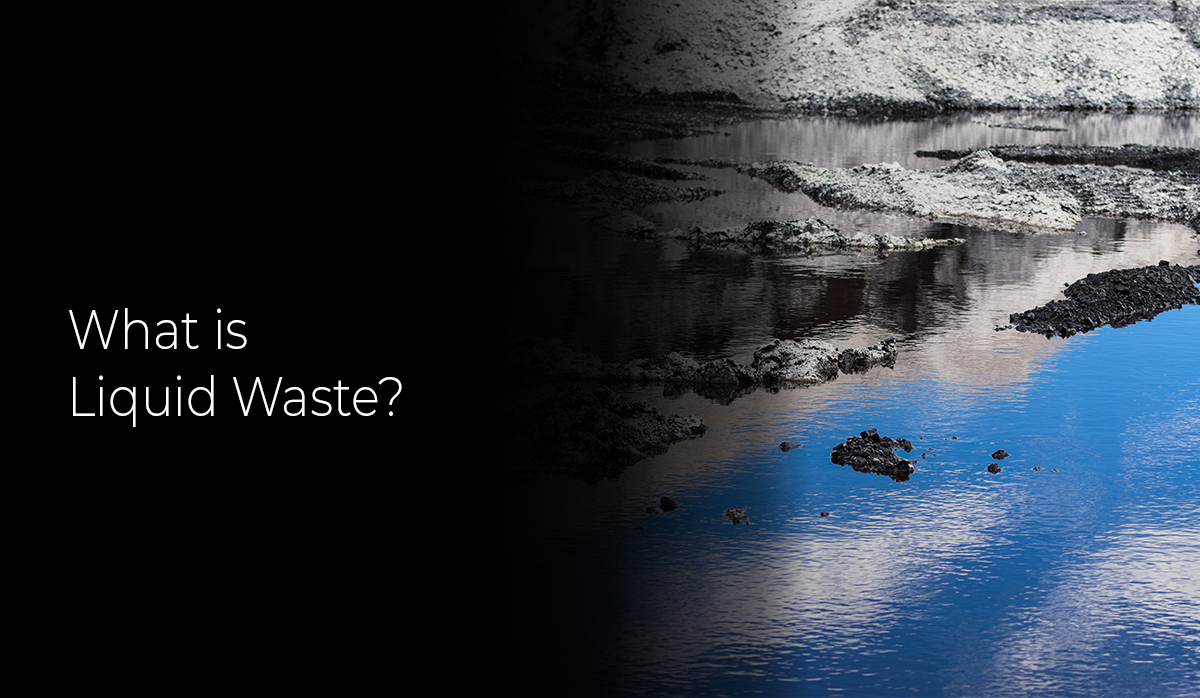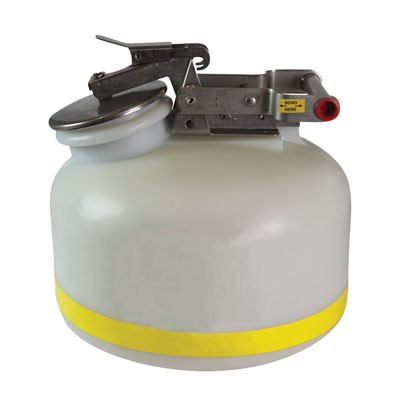How Fluid Waste Disposal Works: A Thorough Review of Methods and Technologies Employed

Summary of Liquid Waste Kind
The intricacy of fluid waste kinds demands a comprehensive understanding of their qualities and effects for disposal. Fluid waste can generally be classified into a number of types, including commercial, metropolitan, farming, and harmful waste. Each classification displays distinct homes, requiring specific monitoring approaches to alleviate environmental and health and wellness threats.
Industrial fluid waste originates from manufacturing procedures and commonly includes a series of impurities, such as hefty metals, solvents, and natural substances. Local fluid waste, largely making up wastewater from homes and business establishments, has organic issue, nutrients, and pathogens (industrial wastewater treatment). Agricultural fluid waste, including drainage from ranches, might include plant foods, pesticides, and animal waste, posing risks to water top quality and environments
Hazardous fluid waste is characterized by its poisoning, sensitivity, or prospective to cause damage. This group consists of compounds like acids, bases, and specific chemicals that demand strict handling and disposal protocols. Comprehending these diverse liquid waste kinds is important for creating efficient disposal approaches and guaranteeing conformity with environmental policies. Correct classification and characterization are necessary for implementing proper therapy techniques and lessening the negative impacts on public health and wellness and the setting.
Physical Therapy Approaches

Testing is the initial action, where bigger bits and particles are eliminated from the fluid waste utilizing screens or grates. This process safeguards downstream devices from damages and makes certain smoother procedure. Complying with testing, sedimentation utilizes gravitational pressure to different solids from liquids. In sedimentation tanks, larger bits work out near the bottom, creating a sludge layer, while the clarified fluid can be additional treated.
Purification is one more important method that includes passing the liquid via porous products, such as sand or membrane layers, to capture smaller fragments. This step boosts the high quality of the fluid, making it suitable for subsequent treatment processes.

Chemical Therapy Methods
Chemical therapy methods are essential for efficiently handling fluid waste, especially in dealing with liquified and colloidal contaminants that physical approaches may not effectively remove. These methods make use of different chemical representatives to counteract, speed up, or change unsafe substances into much less damaging forms.
One usual method is coagulation and flocculation, where chemicals such as alum or ferric chloride are contributed to promote the gathering of put on hold particles. This process enhances sedimentation, enabling easier elimination of the resulting sludge. Additionally, oxidation processes, utilizing representatives like chlorine or ozone, are used to break down complex natural compounds and microorganisms, making the waste more secure for discharge or more treatment.
Neutralization is another important strategy, which readjusts the pH of acidic or alkaline waste streams to neutral levels, avoiding prospective damage to downstream systems and the atmosphere. Moreover, progressed oxidation procedures (AOPs) make use of mixes of oxidants and ultraviolet light to degrade persistent pollutants, achieving a higher level of treatment efficiency.
Biological Treatment Processes
Biological therapy procedures play a vital duty in the monitoring of fluid waste by using bacteria to disintegrate raw material and decrease contaminant levels. These processes can be generally classified right into cardiovascular and anaerobic treatments, each employing our website specific microbial communities to attain reliable waste deterioration.
Cardiovascular treatment involves making use of oxygen to facilitate the malfunction of organic products by microorganisms. This procedure is typically executed in turned on sludge systems, where aeration storage tanks give a favorable environment for microbial development, causing the oxidation of organic contaminants. The resultant biomass can be divided from treated effluent through sedimentation.
On the other hand, anaerobic treatment occurs in the lack of oxygen, relying upon different bacteria to break down raw material. This technique is specifically useful for high-strength waste, as it creates biogas, an eco-friendly power resource, while lowering sludge manufacturing. Technologies such as visit the website anaerobic digesters are often employed in local and commercial applications.
Both anaerobic and aerobic organic treatments not just reduce the ecological impact of fluid waste but additionally facilitate resource recuperation, making them vital components of sustainable waste monitoring approaches. Their performance, adaptability, and efficiency support their widespread application throughout numerous industries.
Arising Technologies in Disposal
Cutting-edge approaches to liquid waste disposal are swiftly advancing, driven by innovations in innovation and a raising emphasis on sustainability. Among these emerging modern technologies, membrane layer bioreactors (MBRs) have acquired traction for their capability to integrate biological therapy with membrane layer filtering, causing high-quality effluent that can be reused in various applications. MBRs make it possible for smaller footprints and more efficient operations compared to conventional systems.
Another encouraging advancement is making use of anaerobic food digestion incorporated with nutrient recuperation technologies, which not just treats fluid waste however likewise generates biogas and recovers useful nutrients like nitrogen and phosphorus. This twin benefit boosts resource performance and decreases ecological effect.
Additionally, advanced oxidation processes (AOPs) are being taken on for the destruction of intricate organic toxins. These techniques make use of powerful oxidants and catalysts to break down impurities at the molecular level, supplying a very reliable option for challenging waste streams.
Moreover, the assimilation of expert system and device learning in waste monitoring systems is enhancing operational performance and anticipating maintenance, bring about minimized costs and boosted ecological conformity. Visit Your URL These technologies mirror a considerable shift in the direction of more effective and lasting liquid garbage disposal practices.
Verdict
In verdict, effective fluid waste disposal demands an extensive understanding of various methods and technologies. The combination of physical, chemical, and biological treatment approaches guarantees the reliable administration of varied waste types. Moreover, the emergence of ingenious technologies improves therapy efficacy and promotes sustainability in waste monitoring practices. By constantly progressing these approaches, it comes to be feasible to deal with the expanding obstacles connected with liquid waste, inevitably adding to environmental security and source recovery.
Liquid waste disposal is a critical aspect of environmental management, needing a detailed understanding of various techniques and technologies tailored to various waste kinds. Fluid waste can generally be classified right into numerous kinds, including industrial, community, agricultural, and dangerous waste. Agricultural liquid waste, including overflow from farms, may include fertilizers, pesticides, and animal waste, posing threats to water top quality and communities.
Various physical treatment methods play a crucial role in managing fluid waste properly - industrial wastewater treatment.In verdict, reliable liquid waste disposal necessitates an extensive understanding of various techniques and modern technologies